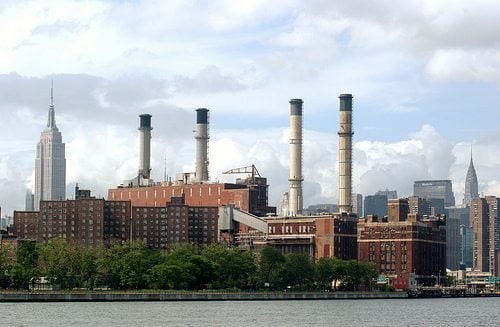

Environment
US energy-related carbon emissions at lowest point since 1994
Carbon dioxide emissions related to energy consumption in the US fell to the lowest point for nearly two decades in 2012, according to a new report.
The analysis, by the US Energy Information Administration (EIA), found that emissions declined by 3.8% in 2012, and were down by over 12% from the recent peak in 2007.
Emissions have fallen each year since then, but the EIA says that this result is significant as energy consumption fell by 2.4% while the economy grew, with GDP increasing by 2.8%. Apart from the recession year of 2009, 2012 represented the largest carbon emissions decrease since 1990.
The report suggests that the decrease can be put down to a number of contributing factors, including warmer weather, the uptake of energy efficient vehicles and lower demand for electricity in residential areas. However, it suggests the improvement was largely driven by a reduction in the carbon and energy intensity of the US economy.
The overall carbon intensity of the economy dropped by 6.5%, the largest decrease since records began in 1949. The report claims that the substitution of natural gas for coal in electricity production meant that emissions lowered throughout the economy, even though the overall contribution of renewable energy sources fell.
Although these findings suggest that progress is being made in decarbonisation in the US, the EIA is hesitant to make long-term predictions based on one year’s worth of data.
However, while natural gas has displaced coal in the US, this same coal has still been mined and burnt elsewhere. In 2012, US coal exports reached a record high of 126m short tonnes, a 17% increase on the previous year.
Róisín Moriarty, senior research associate at the Global Carbon Project, said that fuel exported and burnt elsewhere can be even more environmentally damaging.
She added, “If that coal is exported to a country with less efficient methods of producing electricity from coal than those currently used in the US then more coal needs to be burnt to produce the equivalent amount of electricity and this means an increase in associated emissions.”
Furthermore, research co-led by scientists from the Tyndall Centre for Climate Change Research at the University of East Anglia (UEA) indicates that globally, carbon dioxide emissions reached a record high 35.6 billion tonnes in 2012, increasing by 2.6%.
Moriarty added that globally, emissions are expected to increase again this year.
“At present the emissions are closely linked to GDP and as long as GDP grows more than 1% globally, the emissions continue to grow”, she said.
“So from our projection carbon emissions increased in 2012 and we expect them to increase again in 2013.”
Further reading:
European renewables industry calls for legally binding 2030 targets
OECD warns there is no ‘climate bailout option’
Reducing carbon budgets would be ‘incredibly short-sighted’
IPCC climate report: global temperatures likely to exceed 2C this century


 Environment10 months ago
Environment10 months agoAre Polymer Banknotes: an Eco-Friendly Trend or a Groundswell?

 Environment12 months ago
Environment12 months agoEco-Friendly Home Improvements: Top 7 Upgrades for 2025

 Features9 months ago
Features9 months agoEco-Friendly Cryptocurrencies: Sustainable Investment Choices

 Features10 months ago
Features10 months agoEco-Friendly Crypto Traders Must Find the Right Exchange




























